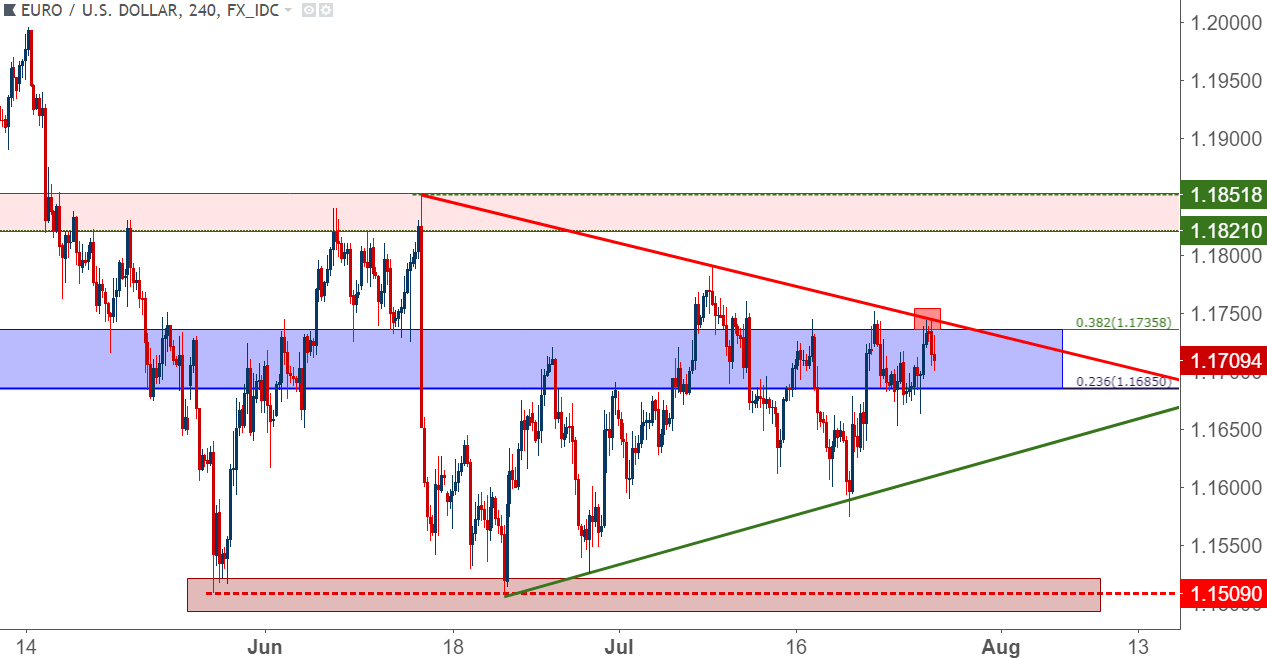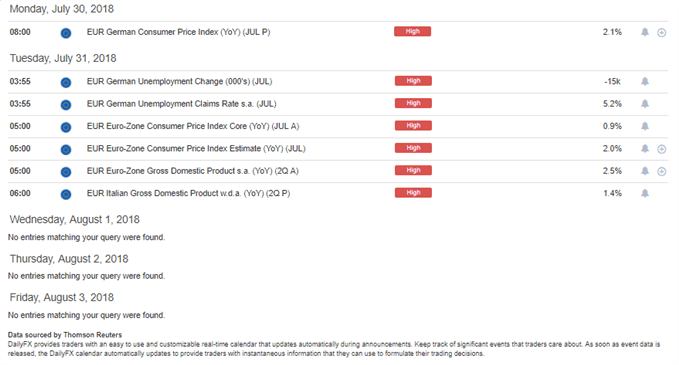EUR/USD HOLDS AT RESISTANCE AS ECB MAKES NO MATERIAL CHANGES TO POLICY, STATEMENT
This morning’s ECB rate decision has been without significant fanfare. The bank reiterated their stance that they’re anticipating keeping rates at current levels ‘at least through summer of 2019,’ while also confirming their earlier strategy to taper bond purchases by the end of the year, beginning in September. This brought upon a minor move in EUR/USD as the currency remains in the symmetrical wedge pattern that’s been building for the entirety of Q3.
EUR/USD FOUR-HOUR PRICE CHART: HOLDS RESISTANCE, POSES MINOR MOVE ON NO-CHANGE ECB
(Click on image to enlarge)

EURO-ZONE INFLATION TO BE RELEASED ON TUESDAY
Shortly after the ECB’s rate decision in June, Euro-Zone inflation for the month of June was released at a 2% print – right at the ECB’s target for inflation. This was an improvement on the prior month’s jump up to 1.9%, and this is starting to show a trend with European inflation. This topside trend to European inflation started to drive the thought that the ECB may have to hike ahead of the previous Q4, 2019 estimation, and there was the slight chance that the bank may acknowledge as such at this morning’s rate decision.
That did not happen, as the ECB made minimal changes to last month’s statement, and this puts focus squarely on next week’s Euro-Zone inflation numbers. This makes next week’s data outlay even more interesting, as we also have rate decisions from the Bank of Japan, the Federal Reserve and the Bank of England.
EURO-ZONE INFLATION HIGHLIGHTS OF NEXT WEEK’S EUROPEAN ECONOMIC CALENDAR

Chart prepared by James Stanley
Regarding inflation, we go into next week’s CPI numbers after a boost from the prior two months. If we do see continued strength here, this could bring back bullish price action in the single currency, much like we saw for the bulk of 2017 trade. The ECB remained dovish and passive throughout last year, but that didn’t stop markets and investors from pushing the Euro higher in anticipation of a hawkish shift at the Central Bank.

